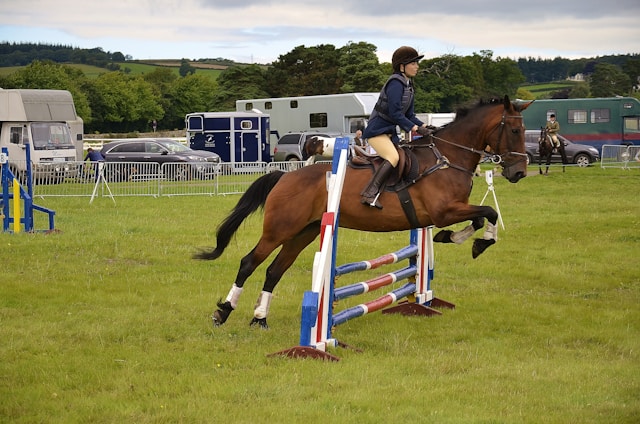Kids’ horse jumps offer a safe and fun way for children to strengthen muscles they wouldn’t otherwise use in everyday life. They also learn how to cope with the ups and downs of competition – an invaluable skill that translates to other sports and life.
Kids’ horse jumps are available in various designs to motivate riders and add interest to their arena. They are constructed with safety, quality, and durability – from Cedar wood that is naturally rot-resistant to Marine plastic to furniture-grade PVC.
Age-Appropriate Jumps
Kids’ horse jumps are designed to suit beginner levels and feature fun designs that make jumping a fun challenge rather than something to be feared. Jumping helps children build confidence and learn to navigate a course while building up their core muscles, abdominal muscles, arm muscles, and hand-eye coordination. This also improves motor planning, which involves judging distance and planning how much power to jump.
Jumping requires a lot of athletic ability and is hard on joints. A 17-year-old isn’t going to have the athletic ability or be able to train as extensively as a younger horse, and they’re more likely to injure themselves or have joint issues.
I would start training a young horse to jump at around 15 as they’re settled, calmer, and more seasoned. Plus, they have plenty of time left before they are ready to compete with other horses.
Size
Jumps that are too large can be intimidating and cause kids to lose confidence before they even start jumping. The ideal kids horse jumps are moderately sized and paired with ground poles that serve as placement rails on the take-off and landing sides of the jump to help the rider stay balanced.
Kids who participate in jumping learn to master motor planning, which involves judging distance and planning how much power they need to make a particular jump. In addition, jumping improves core muscles and builds shoulder, arm, and back strength. Kids who participate in equestrian sports also learn to deal with the ups and downs of competition and build self-esteem.
The most critical factor when deciding whether to move a beginner up to jumping is their mental maturity. They may be ready for jumping if they are comfortable with flat work and willing to try new things.
Design
Jumping is an excellent workout for kids and helps improve their core, abdominal, and arm muscles. It also teaches them how to judge distance and plan how much power to apply. Children who ride or compete learn how to cope with the ups and downs of competition, which will help them in other areas of life.
Riders need to know how their horse responds to jumping exercises and not push them too far before they are ready. Young horses can quickly become overwhelmed and develop issues like running out, rushing to or away from the fence, and balking. If a horse stops going over a jump, it is not something you should beat or whip them for; they are trying to tell you that they is fearful, hurt, or feel overjumped and need a chance to recover.
Top-quality kids’ jumps are built with safety, quality, and durability in mind and are available in various designs that will add interest to any arena. They are constructed of either naturally rot-resistant wood or Marine plastic and come with permanent, soft rubber jump cups that won’t get lost or damaged.
Safety
It is important to remember that horses evolved as prey animals and days-old foals can run very fast for short periods. Jumping a handful of more significant jumps in the jumping chute with a two or three-year-old is not likely to do any harm. But there may be better ideas than repeatedly jumping them over months.
In addition, the mental maturity of a young horse is also crucial to consider. Suppose they are fearful or apprehensive of simple flatwork exercises over poles. In that case, you should hold off on jumping them until they show more confidence and have reached a proper physical maturity level.
Finally, taking your time with a young horse is always better than moving them up to more complicated and extensive jumps too quickly. This can overwhelm them, causing issues like rushing over, bucking, or balking. These problems can lead to injury for both the horse and rider.

